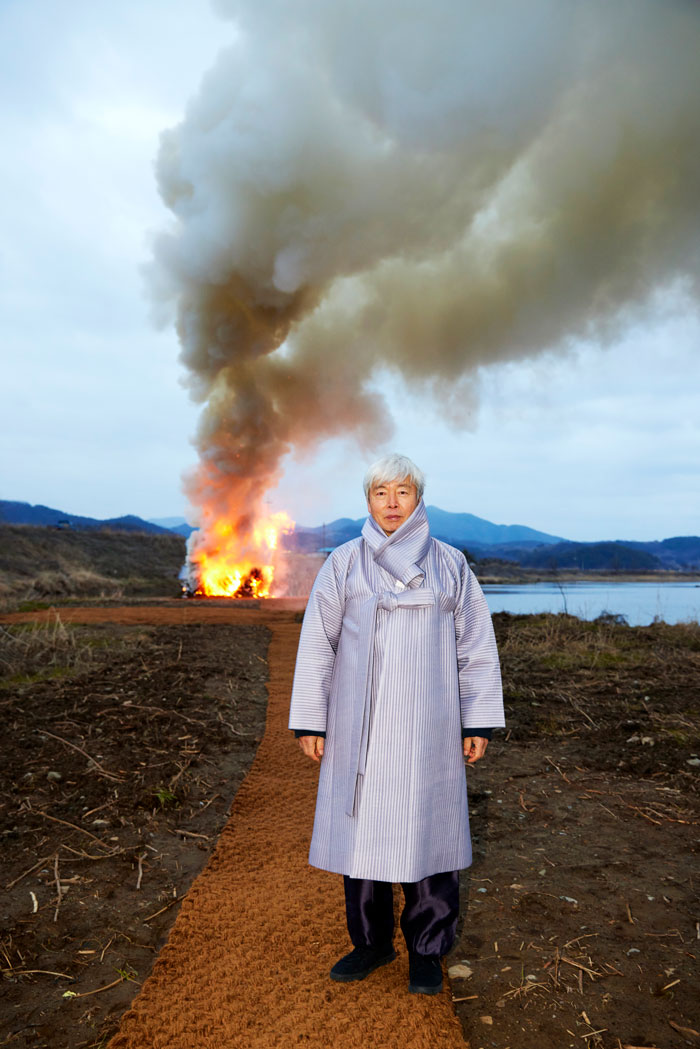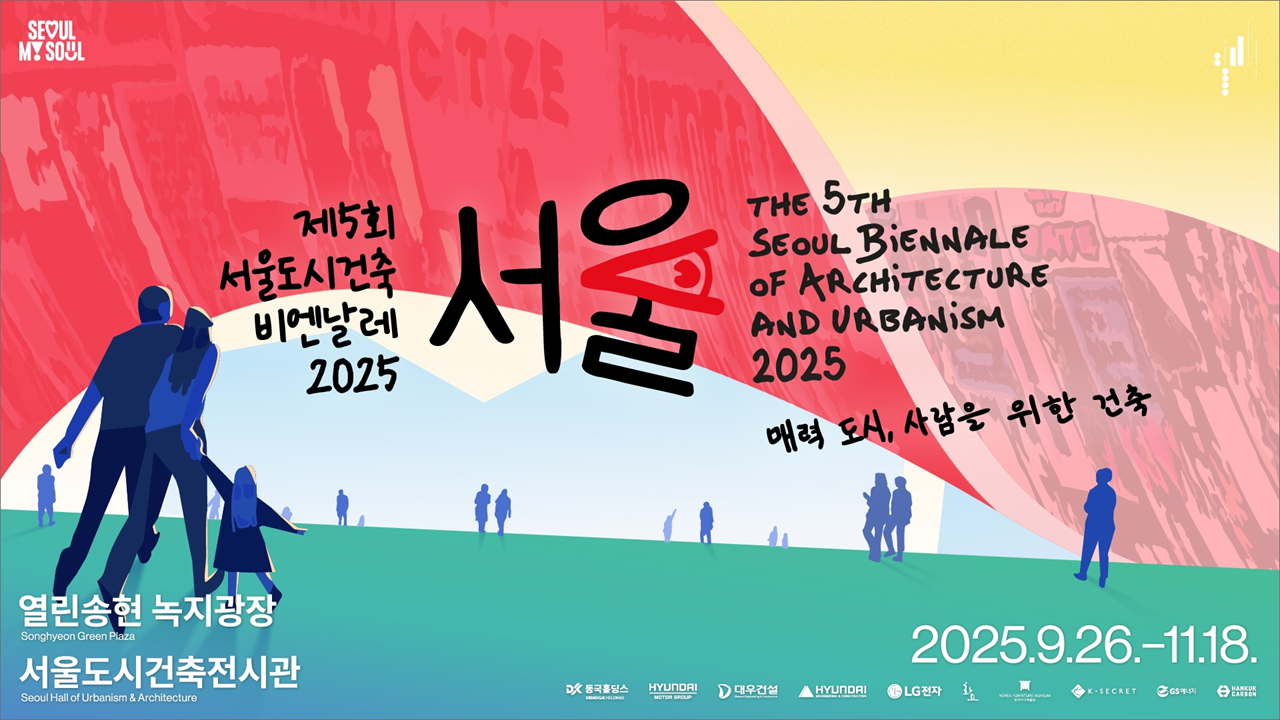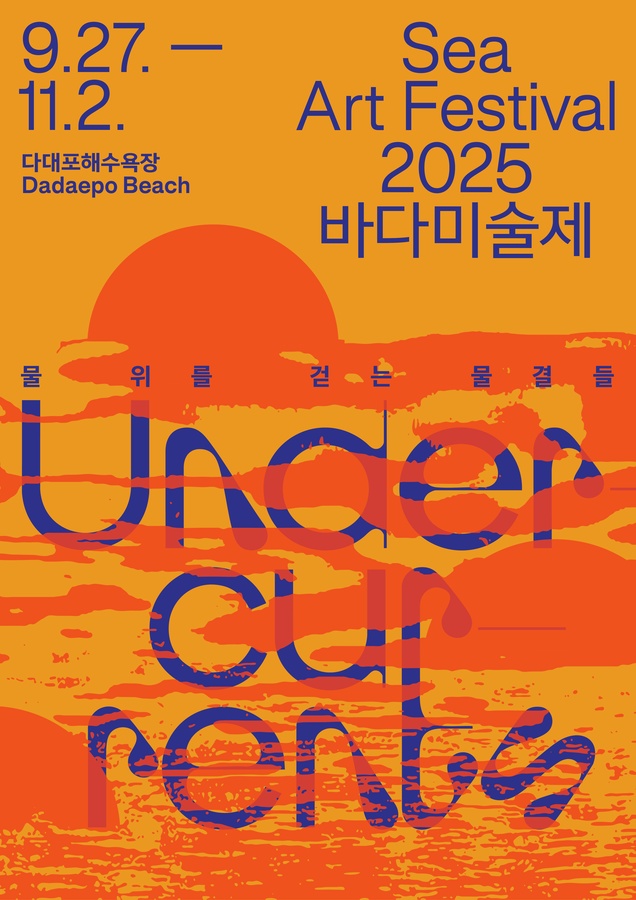The Korean Pavilion of the Venice Biennale was the last one to be built in Giardini Park in 1995 when more than 23 countries were waiting for the opportunity to establish a national pavilion in the area. The 2024 Korean Pavilion exhibition, co-curated by Jacob Fabricius and Seolhui Lee, will showcase the works of artist Koo Jeong A.
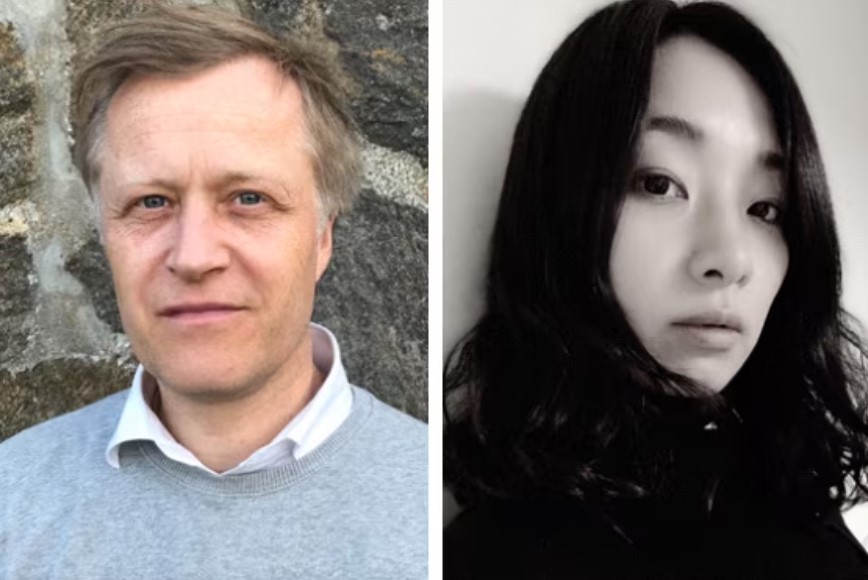
Jacob Fabricius (b. 1970), director of Art Hub Copenhagen, and Seolhui Lee (b. 1987), curator at Kunsthal Aarhus
The Korean Pavilion at the Venice Biennale has named two curators for its 2024 exhibition: Jacob Fabricius (b. 1970), director of Art Hub Copenhagen, and Seolhui Lee (b. 1987), curator at Kunsthal Aarhus.
Fabricius has curated numerous exhibitions at institutions in Europe, including Denmark, Spain, Sweden, and France. From 2016 to 2021, he served as the artistic director of Kunsthal Aarhus, and in 2020, he was the artistic director of the Busan Biennale. Lee led the exhibition team for the Busan Biennale in 2020 and was an adjunct professor at the Korea National University of Arts from 2019 to 2022.
According to Arts Council Korea, the organization that hosts the Korean Pavilion exhibitions each year, the co-curators will curate the pavilion around the theme of the “Korean scent journey” with new works by the artist Koo Jeong-a under the rubric “Odorama Cities.”
Fabricius and Lee will work together to create an immersive and intimate environment that evokes a national portrait of Korea. The Korean Pavilion will provide sensory experiences that can form collective memories through the works of the artist Koo Jeong A, who will add intangible elements such as scent and temperature to the exhibition space.
 Koo Jeong A, resonance, 2020, 810 x 620 x 170(h) cm. Courtesy of the artist & PKM Gallery.
Koo Jeong A, resonance, 2020, 810 x 620 x 170(h) cm. Courtesy of the artist & PKM Gallery.The Korean Pavilion’s first joint curatorship was announced six months earlier than its last edition. It is also the first time that a non-Korean has been appointed as the curator of the Korean Pavilion exhibition. This new move by the Arts Council Korea appears to be a response to the controversy surrounding the appointment of the curator for the previous Korean Pavilion exhibition.
In the last exhibition, the Arts Council Korea had to overturn the selection and repeat the process due to an unfair decision made by one of the judges. After the team for the Korean Pavilion exhibition was formed, issues arose between the artist and the curator. Rather than being merely personal issues, these conflicts could be viewed as institutional issues that exist in the Korean Pavilion.
 Exterior view: History Has Failed Us, but No Matter, The Korean Pavilion – 58th International Art Exhibition, La Biennale di Venezia. Courtesy of Arts Council Korea.
Exterior view: History Has Failed Us, but No Matter, The Korean Pavilion – 58th International Art Exhibition, La Biennale di Venezia. Courtesy of Arts Council Korea.The Venice Biennale is regarded as the “Olympics of the art world.” The Biennale was established in 1895, making it the first recurring exhibition of the type we now refer to as a “biennale.” In 1907, the Biennale authority allowed Belgium to construct the first permanent home for its exhibiting artists, and in the 1970s, it formed a committee that oversees the overarching themes of each edition. Along with these changes, the Venice Biennale has maintained its international reputation as the most prestigious event for contemporary artists.
Although its model of having the nation-state as the basic unit of artistic practices is considered obsolete since the national pavilions of the Venice Biennale are generally operated by government agencies, its history, and tradition of more than 120 years have made it arguably the most prestigious visual arts event with worldwide recognition.
For this reason, many countries aspire to own pavilions at the Giardini della Biennale. There are currently 29 national pavilions in Giardini Park. In 1995, the Korean Pavilion was the last one to be built in the park, when more than 23 countries were waiting for the opportunity to establish a pavilion in the area.
 Partial exhibition view of GYRE, The Korean Pavilion – 59th International Art Exhibition, La Biennale di Venezia. Photo: Studio Locus Solus. Courtesy of the Yunchul Kim.
Partial exhibition view of GYRE, The Korean Pavilion – 59th International Art Exhibition, La Biennale di Venezia. Photo: Studio Locus Solus. Courtesy of the Yunchul Kim.Before the Korean Pavilion was built, the Korean Art Association participated in the Biennale three times in the Italian Pavilion annex: in 1986, 1988, and 1993. However, it was not until 1993 that the Korean government began to support and show interest in the exhibitions at the Venice Biennale.
In the same year, Nam June Paik participated in the German Pavilion and won the Golden Lion. He also took the initiative to establish a Korean Pavilion at the Venice Biennale. Paik believed that Korea had much to contribute to the contemporary art world, but the country lacked knowledge of the international art world, such as the Venice Biennale.
Along with Paik’s endless efforts, numerous people and the social changes in Korea began to alter this perception of the art world in the country. In the 1970s, as Korea experienced rapid economic growth, the country’s desire to enter the international world rapidly increased. In particular, the Korean government in 1993 advocated both localization and globalization, which led to an interest in advancing into the global world through arts and culture.
This rapid economic growth, coupled with its aspirations to expand overseas, has resulted in increased budgets for the arts and culture. Around the 1990s, the government promoted policies that encouraged the development of art-related fields, including the establishment of the Korean Culture and Arts Education Center in 1987 and the Ministry of Culture, Sports and Tourism in 1990.
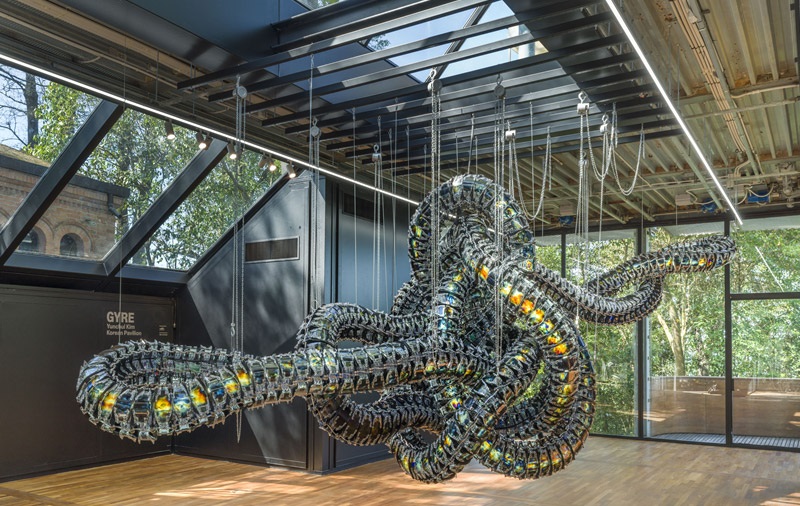 Installation view: Yunchul Kim, Chroma V in GYRE, The Korean Pavilion – 59th International Art Exhibition, La Biennale di Venezia. Photo: Studio Locus Solus. Courtesy of the artist.
Installation view: Yunchul Kim, Chroma V in GYRE, The Korean Pavilion – 59th International Art Exhibition, La Biennale di Venezia. Photo: Studio Locus Solus. Courtesy of the artist.Nam June Paik evidently played a leading role in Venice’s decision to establish a Korean Pavilion, but many other artists, critics, architects, and figures in the art world, as well as government officials, put effort into the project. These individuals actively proposed the establishment of a Korean pavilion at the Venice City Hall, with the Biennale authorities conveying the country’s strong will to bring in the project.
Despite the significant contributions of Nam June Paik, Korean artists, and the Korean government, achieving this goal was not solely their accomplishment. The Italian art historian and critic Achille Bonito Oliva was among those who understood Korea’s aspirations. Bonito Oliva, who was the artistic director of the Venice Biennale in 1993 and also served on the juries of several international art exhibitions held in South Korea, was the person who explained the difficulties of owning a permanent exhibition space in Giardini Park to the Korean government while also delivering the country’s will to Venice officials and the Biennale.
The situation in Europe shortly after the German reunification positively changed the situation in the Korean Pavilion. Under the leadership of Nam June Paik, the significance of the Korean Pavilion was realized by presenting the Biennale authorities with a proposal to operate it in collaboration with North Korea.
In 1995, following the strict regulations of Giardini Park, the Korean Pavilion was built between the German Pavilion and the Japanese Pavilion, where the administrative office and restrooms were originally located.
 Night installation view: Cody Choi, Venetian rhapsody – the power of bluff, 2016-2017, Neon, LED, steel, canvas, PVC, 1243 x 1033 x 111cm. The Korean Pavilion - 57th International Art Exhibition, La Biennale di Venezia. Photo by Riccardo Tosetto. Courtesy of the artist.
Night installation view: Cody Choi, Venetian rhapsody – the power of bluff, 2016-2017, Neon, LED, steel, canvas, PVC, 1243 x 1033 x 111cm. The Korean Pavilion - 57th International Art Exhibition, La Biennale di Venezia. Photo by Riccardo Tosetto. Courtesy of the artist.After experiencing the vicissitudes of fortune, the Korean Pavilion has been running for almost 30 years. Its history of three decades also means that the organization needs time to reflect on its past activities in preparation for its next steps, as many have pointed out that the Korean Pavilion needs to reorganize its operating system and structure, moving away from its traditional role of promoting Korean culture and art to the world.
Through the new co-curators of the 2024 exhibition, many people anticipate that the Korean Pavilion will break away from its role as a mere bridgehead for the introduction of Korean art overseas and instead examine Korea’s unique situation from a macroscopic perspective while simultaneously reflecting the contemporary art scene.
References
- 한국문화예술위원회(Arts Council Korea)
- 호경윤, 베니스 비엔날레 한국관 미술 전시의 제도와 운영에 관한 연구, 2020.02





















